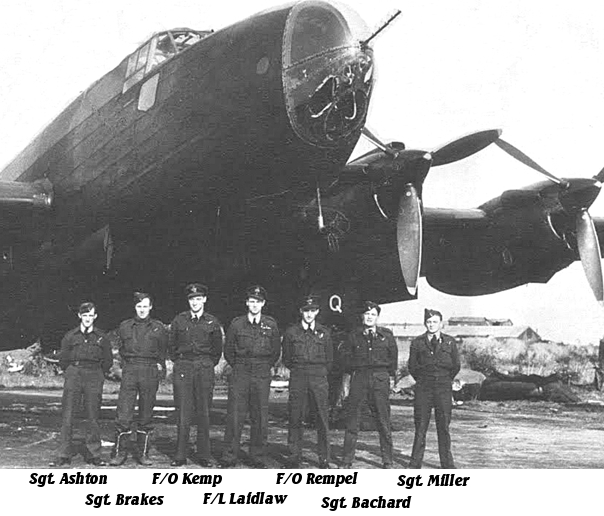
 The next VR-R was LW231 which was "R" from September 5th through to November 18th, when it was changed to VR-F. Although
it appears as VR-F and VR-R on the operations of November 18/19, which was impossible. Halifax JP112 shows as VR-R
on November 18/19 then was replaced by HR910 in February of '44. All this is simply to show that Laidlaw was a pilot on each VR-R, after HR910
there would not be another VR-R until Lancaster KB772 "Ropey".
The next VR-R was LW231 which was "R" from September 5th through to November 18th, when it was changed to VR-F. Although
it appears as VR-F and VR-R on the operations of November 18/19, which was impossible. Halifax JP112 shows as VR-R
on November 18/19 then was replaced by HR910 in February of '44. All this is simply to show that Laidlaw was a pilot on each VR-R, after HR910
there would not be another VR-R until Lancaster KB772 "Ropey".